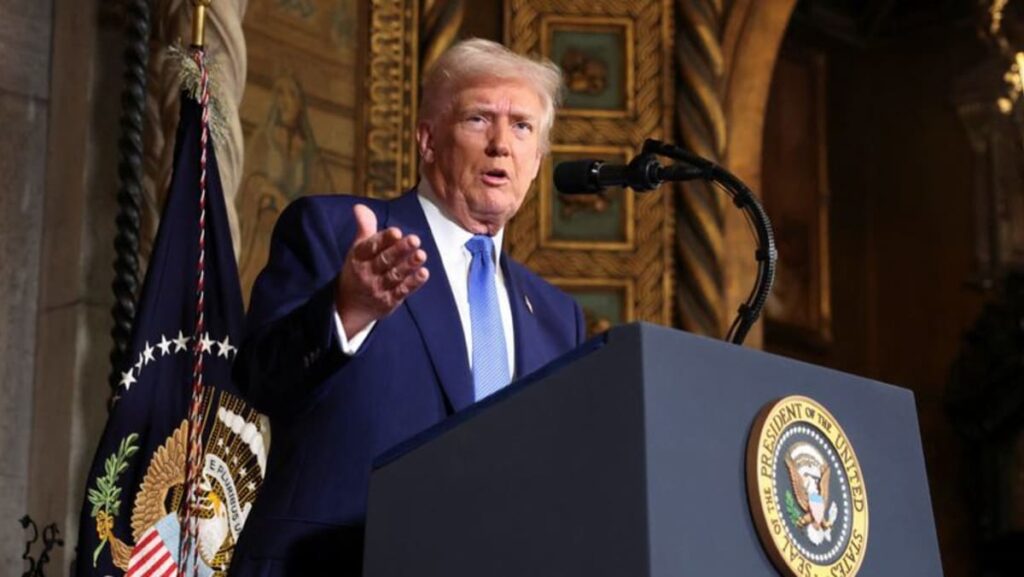The Trump administration’s chief complaint is that permanent demand for dollars keeps the currency strong, even when the US Federal Reserve pursues very accommodative interest-rate policies, as was the case for well over a decade after the 2008 global financial crisis.
Given this, improving America’s export competitiveness – and, thus, its trade balance – requires policy intervention.
To this end, the Trump administration has floated the idea of a Mar-a-Lago Accord, inspired by the 1985 Plaza Accord, under which the five largest industrialised economies agreed to devalue the US dollar relative to the Japanese yen and the German Deutschmark.
The new iteration – the brainchild of Stephen Miran, now the chair of Trump’s Council of Economic Advisers – would be negotiated at Trump’s Mar-a-Lago resort in Florida, rather than the Plaza Hotel in New York City.
But getting your trading partners to help you devalue your currency vis-a-vis theirs is no easy feat. That is why, as Miran argued last year, negotiations would have to be preceded by “punitive tariffs”.
NO EASY FEAT
Countries would be so desperate to get the tariffs reversed, the logic went, that they would agree to whatever Trump demanded.
But America’s trading partners have good reason to be open to a Mar-a-Lago Accord. Since the world needs a reserve currency – no alternative global monetary arrangement has so far proved successful – America’s provision of it amounts to a global public good.
One can thus think of a coordinated dollar devaluation as the price the rest of the world must pay in exchange for that good.
Perhaps more important, other major currencies’ appreciation may not be all bad for the countries that issue them.
https://www.channelnewsasia.com/commentary/trump-us-mar-lago-accord-dollar-devaluation-china-economy-yuan-trade-5167241


